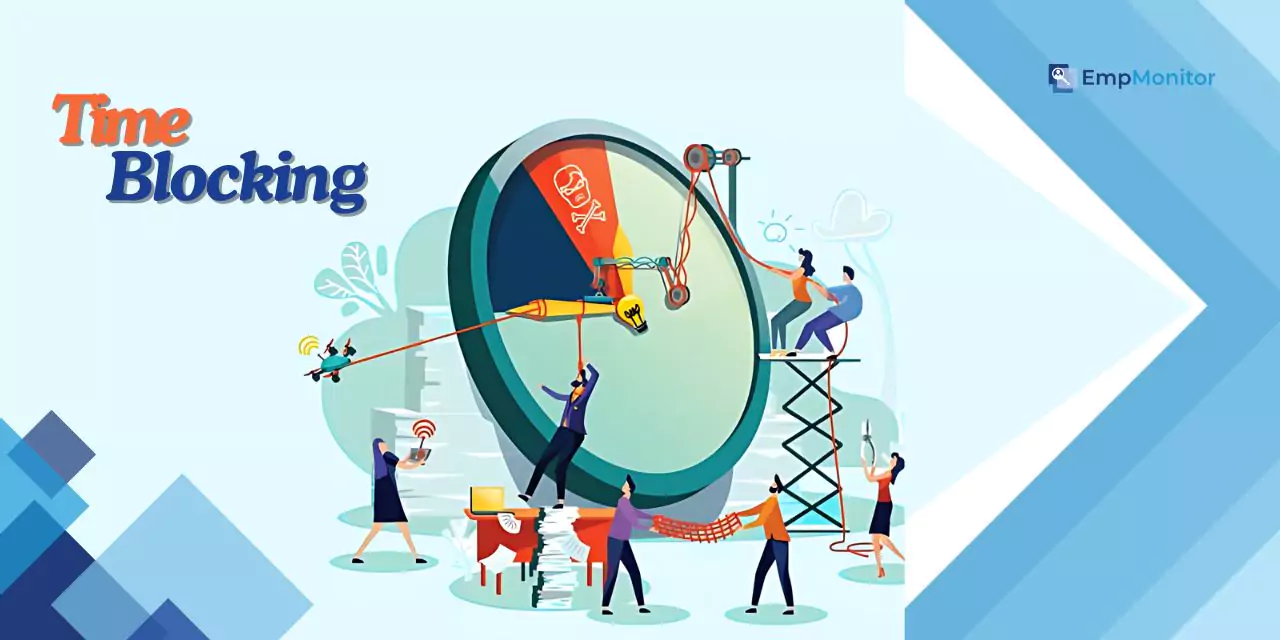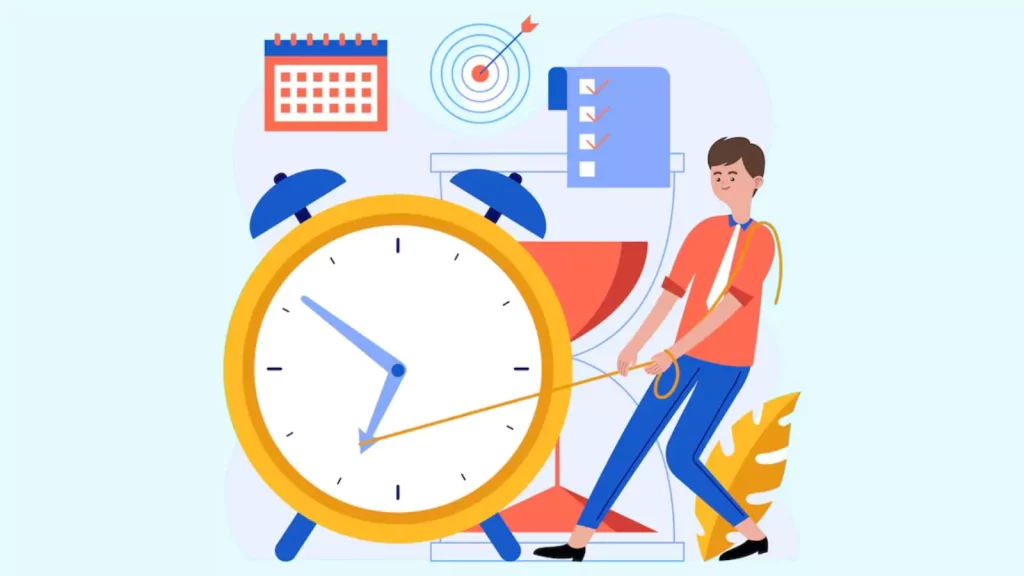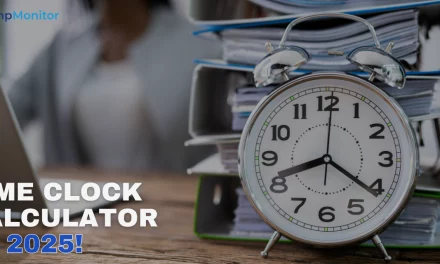In a world where distractions are just a click away, staying focused and productive can feel like an uphill battle. And for such a situation time blocking could be a highly effective time management strategy that allows you to manage your day by dedicating specific time blocks to each task. Whether you’re managing multiple projects, balancing a hectic schedule, or simply aiming to maximize your day, this approach helps you prioritize tasks and stay focused.
In this blog, we’ll explore essential time-blocking tips to help you maximize your productivity, stay on track, and achieve your goals efficiently.
IN A HURRY? LISTEN TO THE BLOG INSTEAD!
Why Time Blocking Is Highly Effective?
Time blocking may seem straightforward, but it significantly enhances your productivity. Here’s why this method is so effective:
- Encourages Focused Deep Work: Time-blocking is advocated as it helps concentrate on one task at a time. Focusing deeply on fewer tasks, rather than juggling many at once, can boost productivity. The importance of dedicating full attention to a single task without spreading it too thin is emphasized, as this fosters meaningful work.
- Boosts Efficiency with Shallow Work: Shallow work- such as handling paperwork or answering most emails- can be managed more efficiently with time blocking. By dedicating specific blocks of time to these less impactful tasks, you minimize context switching and conserve- mental energy for more significant work.
- Enhances Time Awareness: Many people struggle to estimate how long tasks will take and often overestimate what can be achieved. Tools like EmpMonitor can help you confront your priorities and manage your schedule more effectively. Tracking time spent on various tasks, it forces you to allocate time for each commitment, making it easier to say no to new tasks that could disrupt your plans.
- Mitigates Perfectionism: Perfectionists often face challenges with open-ended projects due to the constant need for adjustments. Timeboxing helps counteract this by setting strict deadlines for tasks, encouraging you to complete work within a set time frame and then move on, freeing up time for relaxation or personal activities.
- Supports Goal Achievement: Research indicates that detailed, concrete plans improve follow-through. Time scheduling requires you to create detailed schedules for tasks and goals, making you more likely to consistently act on your intentions and work towards your objectives.
Who Should Try Time Blocking?
Time blocking works best when you have open slots in your time blocking planner. It may not be as useful if your schedule is packed- with meetings. According to the Law, which states that “work expands to fill the time available for its completion,” calendar blocking can help you regain control of your schedule and use your time more effectively.
Consider trying time-blocking if:
- You often attempt to multitask.
- You struggle to concentrate on a single task and find it hard to minimize distractions.
- You want to be more deliberate with your time and energy at work.
- You need better insight into how you spend your time daily.
- You find yourself working excessively.
When starting with time scheduling, view each block as a dedicated period for focused work on key projects and deep tasks.
3 Effective Time Blocking Methods
1. Task Batching
Task batching means combining similar tasks into one dedicated work session.
For example, you might allocate a specific time each day to handle all your emails instead of responding to them as they come in. This approach helps you stay focused and minimizes the constant switching between tasks. Additionally, task batching can involve breaking down larger tasks into smaller, manageable parts, making it easier to tackle big projects without feeling overwhelmed.
Time Blocking vs. Task Batching
Task Batching is a component of time blocking. It involves grouping similar tasks to be completed in one go, reducing time lost to frequent task-switching. For example, if you manage a social media calendar and usually handle various related tasks throughout the day, time batching these tasks into one focused session can increase efficiency. This session is then scheduled- as a time block on your calendar.
2. Day Theming
Day theming is an advanced time blocking technique where you assign entire days to specific categories of tasks or projects.
For instance, you might dedicate Mondays to sales and marketing while Tuesdays are reserved- for accounting and finance. This method helps you maintain a consistent focus and rhythm, allowing for deeper work and increased productivity within specific areas of your responsibilities.
3. Timeboxing
Timeboxing is a method where you allocate a fixed amount of time to work on a particular task or project.
Unlike general time scheduling, which may involve larger blocks of time for various tasks, timeboxing is about committing a specific timeframe to a task. This technique is based- on law, which suggests that work will expand to fit the time available. By setting a strict time limit, you can prevent tasks from dragging on and ensure steady progress, even if you don’t complete the entire project within the timebox.
Time Blocking vs. Timeboxing
Timeboxing and time blocking are both effective time management techniques, but they operate in distinct ways:
- Time Blocking: This involves assigning a block of time to a group of similar tasks. For example, you might allocate a block from 3 pm to 4:30 pm for “Review design feedback,” during which you address multiple designs. The focus is on batching related tasks together within a designated time frame.
- Timeboxing: This strategy involves setting specific start and end times for each task. For instance, you might schedule 3 pm to 3:15 pm to “Review design feedback on Facebook banner image,” followed by 3:15 pm to 3:30 pm for “Revise home page image based on design feedback.” Timeboxing is effective for managing tasks with strict deadlines or for overcoming perfectionism by boosting productivity.
How To Implement Time Blocking
You can set up time blocks in your calendar on a daily or weekly basis. If possible, plan a week in advance, ideally on a Friday afternoon or Monday morning, so you know exactly what to focus on for the upcoming week. Here’s a straightforward process:
Step 1: List Your Tasks
Start by jotting down all the tasks you need to complete, including meetings, project work, administrative duties, breaks, and exercise.
Step 2: Prioritize Your Tasks
Determine which tasks are most important or urgent and prioritize them. Assign your time according to these priorities.
Step 3: Estimate Task Duration
Estimate how long each task will take. Be aware of the planning fallacy, which is the common tendency to underestimate the time required for tasks.
Step 4: Block Time on Your Calendar
Schedule each task in your calendar by creating time blocks. If you make your calendar visible to your team, they can better plan meetings and requests around your schedule.
Step 5: Follow Your Schedule
Stick to your time blocks by minimizing distractions- close unnecessary tabs, silence your phone and stay focused. If a task isn’t completed within its time block, reschedule it for a future block.
How To Incorporate Time Blocking Into Your Existing Productivity Workflows
If you’re already using a task management tool and a calendar app, integrating time blocking can further boost your productivity. Here’s how to implement it effectively:
1. Leverage Task Management Tools
Task Management Tools can help you streamline your workflow by organizing tasks, assigning responsibilities, and tracking progress in real time. With features like automated screenshots and detailed productivity reports, EmpMonitor offers valuable insights into team performance, ensuring tasks are completed efficiently. By using EmpMonitor, you can maintain an organized, transparent, and productive work environment.
2. Set Up Calendar Integration
With the Google Calendar integration, you can sync your calendar in various ways:
- All Tasks in a Specific Project: View every task within a project, regardless of assignee. This overview helps you plan around project deadlines and dependencies.
- Tasks Assigned to You in a Project: See your tasks within individual projects. Syncing projects as separate calendars and using Google Calendar’s color-coding helps you quickly identify tasks associated with different projects.
- All Tasks Assigned to You: Get a comprehensive view of all your tasks across projects. It helps you focus your planning around your complete task list.
3. Sync Your Team’s Tasks
Enable your team to use the integration as well. It allows everyone to see each other’s schedules and deadlines, facilitating easier meeting scheduling and collaborative work. As a manager, you can monitor team calendars to get an overview of workloads and availability.
4. Prioritize and Schedule
Prioritize your weekly tasks and pin them to your Agenda. Convert these tasks into calendar events using the integration, allowing you to allocate dedicated time blocks for each task.
5. Utilize Task Management Features
When executing your scheduled work, your task management tool provides trackable tasks with context, saving you time. It also supports team collaboration on complex tasks or those needing stakeholder input. Tools like EmpMonitor can enhance this process by offering detailed insights into team productivity and task progress.
EmpMonitor helps you maintain an overview of tasks, track progress, and keep your team organized and productive by providing real-time monitoring and reporting features. This ensures that tasks are completed efficiently and that your team stays aligned with project goals.
EmpMonitor: Workforce Management Software
EmpMonitor is a powerful workforce management software designed to streamline and optimize employee monitoring, productivity analysis, and overall workforce management. This tool offers a wide array of features tailored to help businesses of all sizes effectively manage their teams, whether in-office, remote, or hybrid.
- Detailed Time Tracking: EmpMonitor- time tracking software allows you to monitor how much time employees spend on specific tasks accurately. This helps in effectively setting and adhering to time blocks, ensuring that employees are focusing on the right tasks at the right times.
- Productivity Reports: EmpMonitor generates detailed productivity reports that highlight how time is being used across the team. These insights can help managers and employees adjust their time blocks to maximize efficiency and reduce time wastage.
- Automated Screenshots: Capture periodic screenshots of employee screens to monitor activities and ensure adherence to company policies without constant supervision.
- Real-Time Monitoring: Track live activity, application usage, and website visits in real time to gain immediate insights into employee productivity and behavior.
- Customizable Alerts: Set up alerts and notifications for specific activities or thresholds, allowing for proactive management and quick response to potential issues.
By integrating EmpMonitor with the time-blocking method, businesses can ensure that their teams manage their time effectively and stay focused on high-impact tasks, ultimately leading to improved productivity and better results.
Also Read,
Time Blocking Planner 101 (3 Free Time Block Templates)
Time Mapping 101: Unlock Your Productivity Potential
How To Master Time Blocking For Daily Productivity?
5+ Tips For Implementing Time Blocking In Your Schedule Today
It is simple in concept but can be difficult to implement and sustain consistently. Follow these six tips to effectively manage your calendar and anticipate potential challenges at each stage.
Identify Your Daily Tasks:
Begin by listing all the tasks you need to complete each day or week. Maintain and update a to-do list with essential tasks and prioritize them. Choose tools that allow you to add details such as task priority, attachments, and collaborators to ensure clarity.
Common challenge: Without clear priorities, you might struggle to complete important tasks, leading to incomplete work.
Determine Your Peak Productivity Times:
Schedule time blocks based on when you are most productive. Allocate high-energy tasks or meetings to your peak times, and reserve less demanding tasks for periods when you’re less energetic. Adjust your schedule to align with your natural productivity rhythms.
Common challenge: If you’re feeling drained by the end of the day, reassess and adjust your time blocks to better match your productivity patterns.
Consolidate Meetings:
Group meetings into a single time block with breaks in between to avoid constant interruptions. This approach helps maximize focused work time and minimizes disruptions. Consider using tools to assist in scheduling and managing meetings effectively.
Common challenge: Meetings might not always fit perfectly into your ideal time block. Be flexible and reschedule as needed.
Schedule and Label Your Time Blocks:
Allocate specific periods for tasks based on your daily priorities. Clearly label each time block to indicate its purpose, such as “Focus time” or “Personal time,” to help manage interruptions from team members and ensure accountability.
Common challenge: A fully scheduled calendar may make it difficult to accommodate urgent meetings. Use clear labels to manage and communicate your availability.
Include Personal Time:
Reserve time blocks for personal activities and breaks. Schedule time for essential personal tasks and relaxation to maintain a balanced schedule. Consider leaving some personal blocks open for spontaneous activities that help you recharge.
Common challenge: Over-structuring personal time can limit flexibility. Allow some open blocks to choose activities that feel most refreshing in the moment.
Plan for Flexibility:
Allocate time blocks for handling unexpected tasks or interruptions. Use an afternoon block for flexibility to manage unforeseen work or reschedule disrupted tasks without derailing your day.
Common challenge: Ensure new tasks are prioritized correctly compared to your existing work. Adjust your schedule based on the urgency and importance of tasks.
By following these tips, you can effectively implement time blocking and enhance your productivity while adapting to any challenges that arise.
Wrapping Up
Embrace these tips, and watch as your productivity soars. Better planning, better results.
FAQs
Q. How is time blocking different from a traditional to-do list?
Unlike a to-do list, which simply lists tasks, time blocking assigns a specific time frame to each task. This structure helps you manage your time more efficiently and prevents tasks from taking longer than necessary.
Q. Can time blocking help with avoiding multitasking?
Yes, time blocking is an effective way to avoid multitasking. By dedicating specific time slots to individual tasks, you can focus on one task at a time, leading to better quality work and less mental fatigue.
Q. Should I block time for both work and personal activities?
Yes, time blocking is effective for both professional and personal tasks. Incorporating personal activities like exercise, meals, and relaxation helps maintain a healthy work-life balance and ensures you prioritize self-care.















